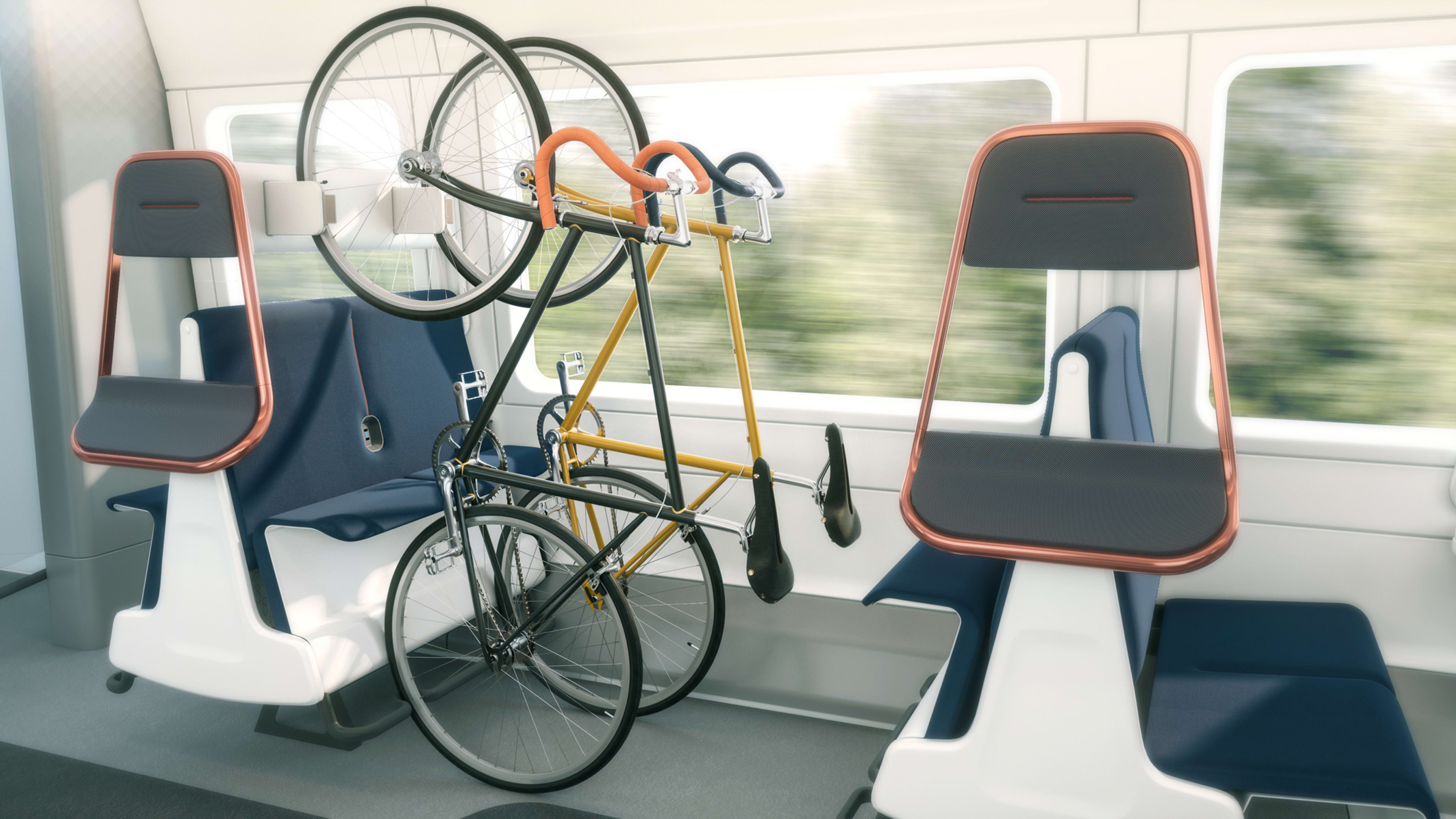As people return to work, transit systems will need to do a better job of supporting bike ridership, which has already grown substantially across Europe and, to a lesser extent, the U.S. during the COVID-19 era. And no wonder: People cooped up at home are looking for a fun, safe way to get some fresh air, and an alternative to the close confines of public transportation. One design firm has released a concept that makes commuting by bike a little bit easier.
British transportation design consultancy PriestmanGoode has adapted its Island Bay train seat (originally designed in response to a brief from the British nonprofit company Rail Safety and Standards Board) to double as a bike rack. That means that empty seats that would be blocked off to ensure social distancing between passengers could be repurposed as storage for cyclists.
[Image: PriestmanGoode]
Public transportation systems across the world have struggled with how to adapt their service to meet social distancing guidelines even with limited service. Some countries, such as South Korea and China, are minimally enforcing social distancing on public transportation; meanwhile Rome’s public transportation system is using large stickers to designate seats that should be left empty, according to The Wall Street Journal. Public transportation capacity will be reduced to 10% in the U.K. for the foreseeable future. But biking and walking are already seeing a 70% increase compared with pre-COVID-19 figures. Prime Minister Boris Johnson has called it a “golden age for cycling,” according to The Guardian.
PriestmanGoode’s Island Bay seats are currently going through certification and could be six months from market, according to a spokesperson for the firm. The adapted train seats, which are currently just a concept, would accommodate bikes by converting into a vertical bike rack after the seat is folded up. The back wheel of the bike rests on the train floor, while the top wheel clicks into a holder above the parallel seat back. The solution would only work with the firm’s Island Bay seat design.
Some commuters will still have to take the train to work, but that doesn’t mean they’ll want to drive their car for the “first and last mile,” says Paul Priestman, designer and chairman of PriestmanGoode, in a press statement. “As urban planners in our major cities close roads to traffic to ease pressure on public transport systems and move people on to alternatives such as bikes, the revision to the Island Bay seating configuration supports that goal too.” With more bike-friendly trains, you can keep your distance in a small space—and replace the bus or subway that bookends your commute entirely.
It’s hard to say whether the uptick in cycling will outlast the closure or reduced service of public transportation. The city of Paris has already begun planning changes to its urban landscape that would increase bike lanes and decrease cars post-pandemic (though mayor Anne Hidalgo had announced a plan to reduce cars previous to the pandemic). Additional bike lanes are popping up, from Berlin to Boston to Bogota, and they will be left permanently in place. Social distancing is a pain. But at least it could change public transport for good.
Recognize your brand's excellence by applying to this year's Brands That Matters Awards before the early-rate deadline, May 3.
